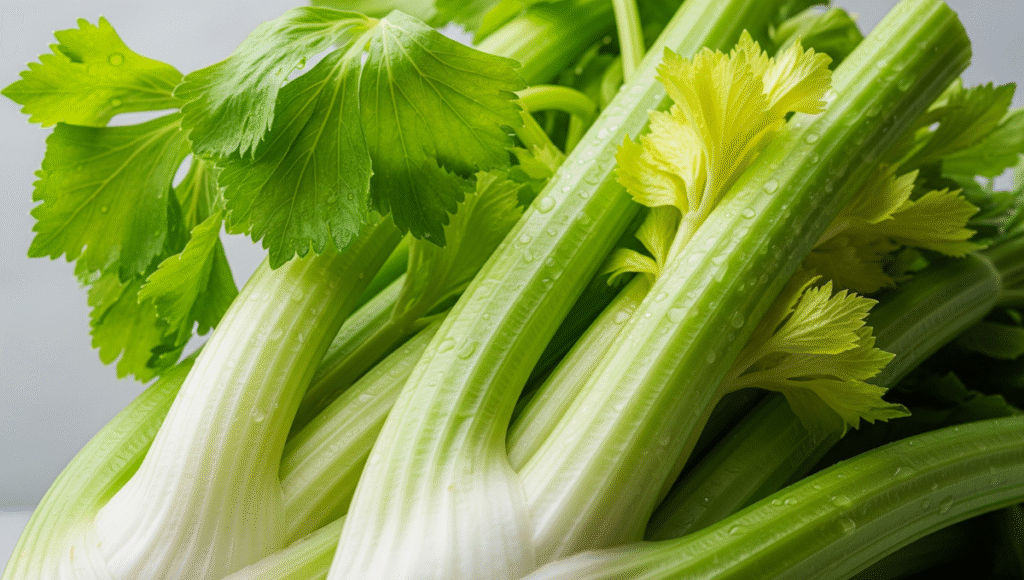Celery is a humble vegetable often overshadowed by flashier produce, yet it holds a unique place in kitchens and traditional medicine worldwide. Among the many varieties, Pravi Celer—or “real celery”—stands out for its rich flavor, impressive health benefits, and versatility. Whether you’re a culinary enthusiast, a health-conscious eater, or simply curious, this guide will take you through everything you need to know about Pravi Celer.
What is Pravi Celer?
“Pravi Celer” literally means “real celery” in several Slavic languages, distinguishing it from other similar plants often confused for celery. It refers specifically to the common celery (Apium graveolens), prized for its crunchy stalks, fragrant leaves, and edible seeds. Unlike some milder or ornamental varieties, Pravi Celer has a distinct aroma and flavor, making it a staple in soups, salads, and juices.
How to Identify Real Celery?
Recognizing genuine celery is easier than you might think if you know what to look for:
-
Appearance: Pravi Celer has tall, crisp stalks that are pale to bright green. The stalks are ribbed and joined at the base by a fresh, leafy crown.
-
The foliage is delicate and lush green, emitting a crisp aroma with a hint of mild spiciness.
-
Texture: The stalks are firm and crunchy, not rubbery or wilted.
-
Aroma: True celery has a fresh, earthy, slightly bitter scent—distinct from celery-like herbs or milder varieties.
Nutritional Powerhouse
One of the reasons Pravi Celer deserves its “real” status is because of its impressive nutritional profile:
-
Low in Calories: Celery is mostly water, making it a refreshing, low-calorie snack.
-
Rich in Fiber: It promotes healthy digestion and supports gut health.
-
Packed with Vitamins and Minerals: Including vitamins A, C, and K, folate, potassium, and antioxidants.
-
Anti-inflammatory Properties: Celery contains phytonutrients known to reduce inflammation and support overall wellness.
Culinary Uses of Pravi Celer
Pravi Celer’s crunchy texture and aromatic flavor make it a versatile ingredient:
-
Fresh Snacking: Paired with dips or peanut butter, celery is a classic healthy snack.
-
In soups and stews, it enhances both the richness of flavor and the overall texture.
-
Juicing: Celery juice has surged in popularity for its hydrating and detoxifying qualities.
-
Salads and Stir-Fries: It complements other vegetables with a subtle crunch and fresh taste.
-
Herbal Uses: Celery seeds, often derived from Pravi Celer, are used as seasoning and traditional remedies.
Growing Your Own Pravi Celer
For gardening enthusiasts, growing Pravi Celer at home can be rewarding but requires patience:
-
Climate: Prefers cooler weather and plenty of moisture.
-
Soil: Needs rich, well-drained soil with a neutral to slightly acidic pH.
-
Watering: Regular watering is essential to prevent the stalks from becoming tough.
-
Harvesting: Typically ready in 3-4 months; pick stalks when they are firm and tall.
Common Myths About Celery
-
Celery is just water: While celery is about 95% water, it’s packed with nutrients and fiber that contribute to health.
-
Celery burns more calories than it provides: The so-called “negative-calorie food” myth is exaggerated, but celery is still a low-calorie, nutrient-dense choice.
-
Celery is bland: Pravi Celer has a distinctly fresh, peppery flavor that adds depth to dishes.
Final Thoughts
Pravi Celer is much more than a simple vegetable on your grocery list — it’s a versatile, nutritious, and flavorful ingredient with a rich history and a promising future in kitchens around the world. By understanding what makes real celery special, you can make better choices for your cooking and health.
Whether you’re munching on fresh stalks, blending juice, or growing it yourself, Pravi Celer deserves a place at your table as the true star of the celery family.

